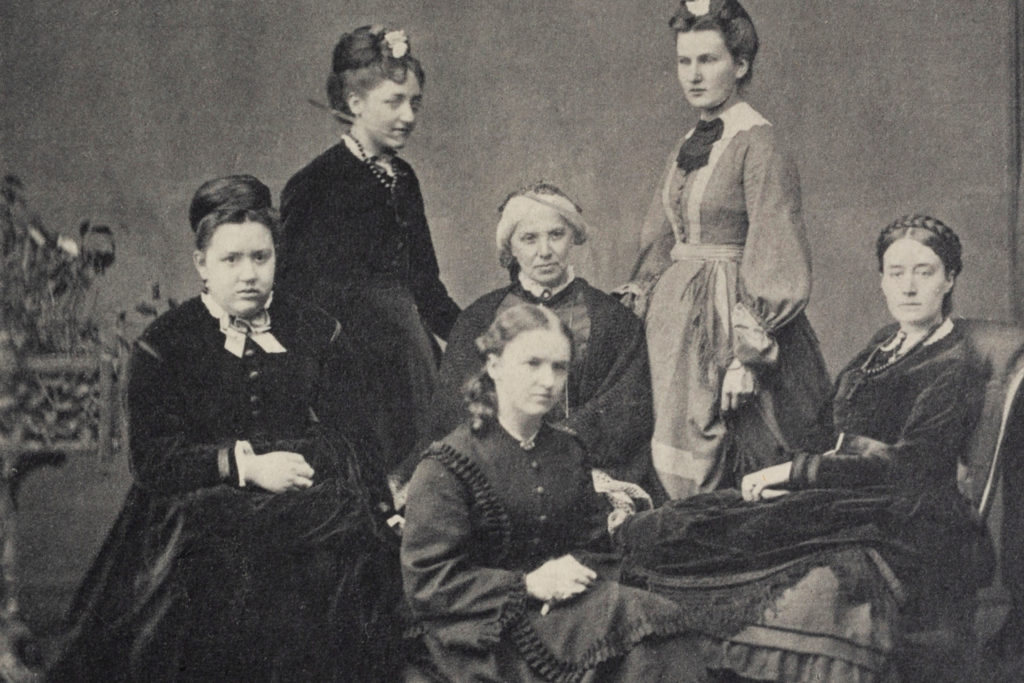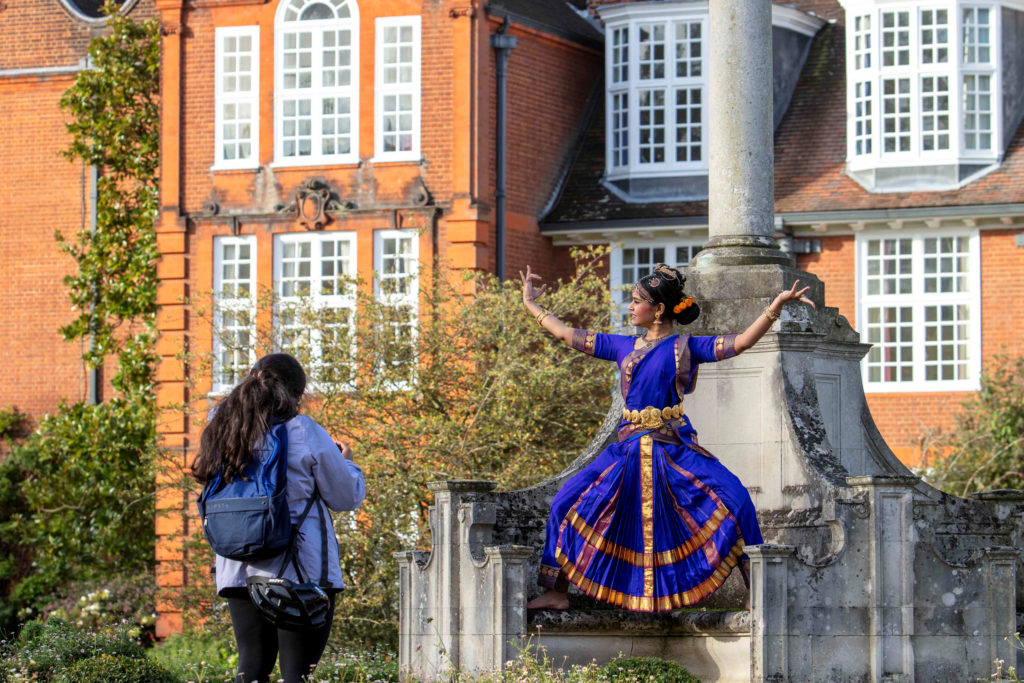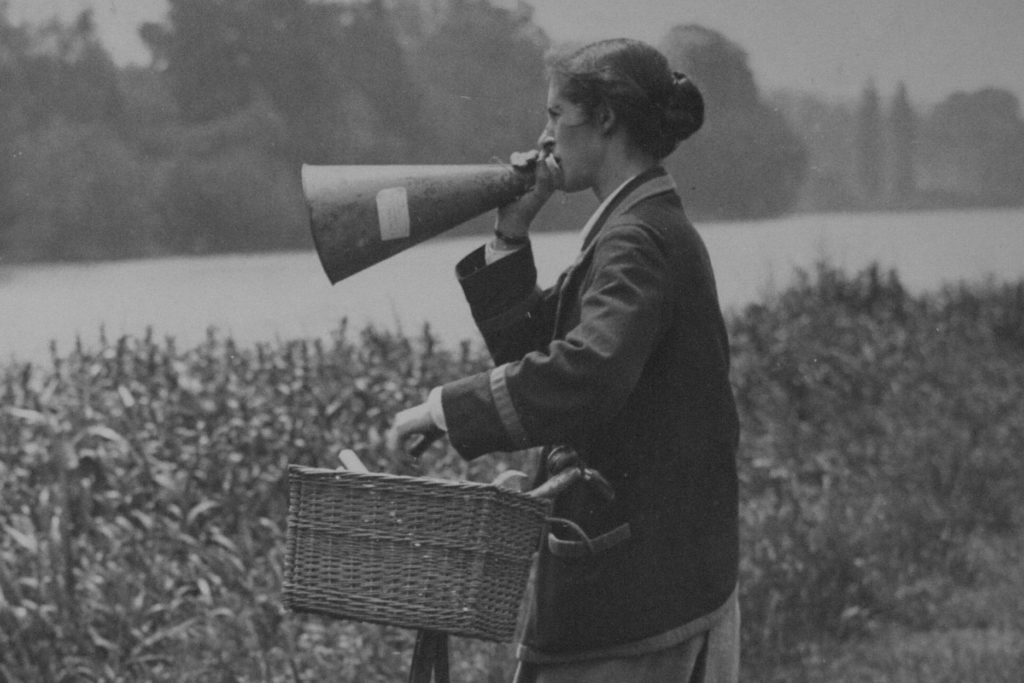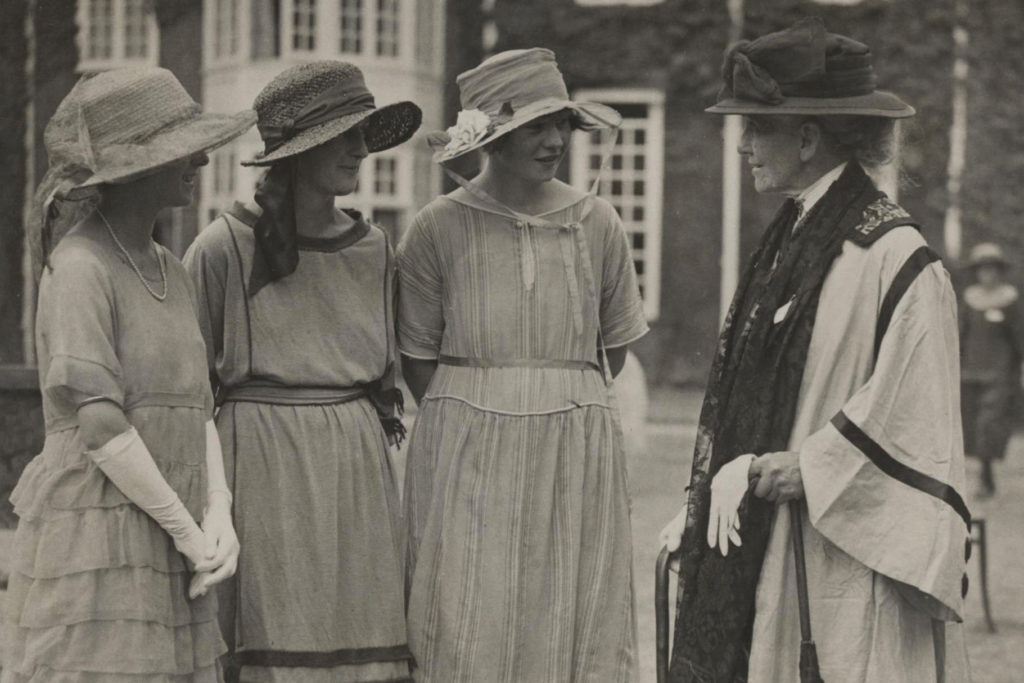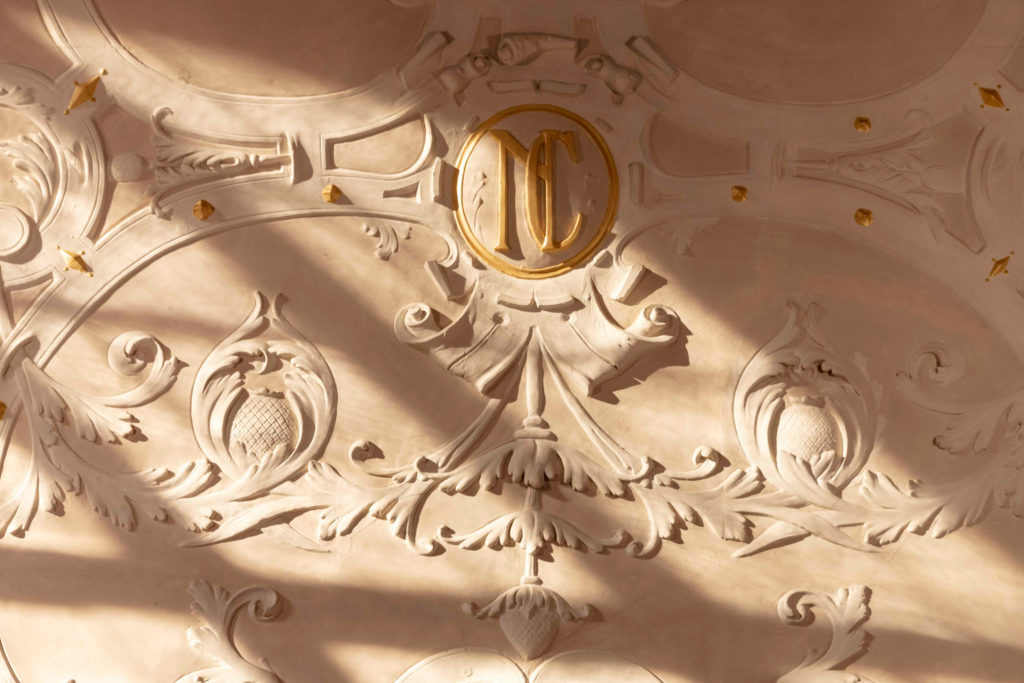Many of the first ever women to study at Newnham College worked tirelessly for women's right to vote in Britain.

Some of Newnham’s campaigners for suffrage well known, and some less so. Millicent Fawcett, one of the founders of Newnham and the president of the National Union of Women’s Suffrage Societies (NUWSS) campaigned all her life for women’s suffrage in Britain. She gave her first speech in favour of women’s suffrage in 1869 when she was just twenty-two, despite suffering from ‘cold spasms’ beforehand. In front of an audience that included the philosopher John Stuart Mill she argued that women ‘should no longer forget their claims to equality for toys and sugar-plums.’
Fellow Newnhamite and suffragist Margaret Heitland wrote Fawcett’s obituary for the Newnham Roll Letter in 1929: ‘The great work of her life was for the enfranchisement of women, and the education of women formed an essential part of that liberation.’ Mililcent Fawcett was clear in her purpose which propelled her through life. Heitland continued:
‘she walked rapidly, with a quickness of step which left most people out of breath. But she walked, as she spoke, as she wrote, as she did everything with definitiveness of aim, with tremendous life. I have never known anyone carry through what she attempted with more clearness and competence.’[1]
On 26th July, 1913 Millicent Fawcett addressed the crowd of 50,000 in Hyde Park which was the culmination of a five-week nationwide pilgrimage, where women marched from as far as Newcastle and Carlisle in the North and Portsmouth in the South, wearing pins and sashes in red, green and white, the colours of the NUWSS. The programme for the suffrage pilgrimage also remarked on Millicent Fawcett’s walking: ‘Some interesting figures have been seen in these bands of pilgrims. Mrs Henry [Millicent] Fawcett, the veteran leader of the constitutional movement, and in spite of her years, an excellent walker, is with the Great North Road contingent.’[2] Millicent Fawcett recalled in her autobiography What I Remember that the pilgrimage ‘was all like a wonderful dream,’ but was bitterly disappointed when this did not result in a change in government policy.[3] While Liberal Prime Minister Herbert Asquith met with a deputation of suffragists for the first time since 1911, he was not swayed.

The Newnham Suffrage Caravan
Other Newnham students, including Ray Stratchey (Costelloe) also participated in agitation for suffrage. Strachey joined the suffrage caravan in the summer of 1908. As Angela Willis has written, this strategy coincided with the ‘craze for the idyllic horse-drawn caravan holiday which was sweeping across the leisured and professional classes in Britain.’[4] We find a report of the suffrage caravan in Newnham’s 1908 Roll Letter. Participants recalled that ‘we wished to have a pleasant holiday; and at the same time to take part in the Women’s suffrage movement.’ They travelled by caravan, pulled by a horse called Jock (who had ‘an enormous appetite and was too well bred to be allowed to spend a night in a field’) and driven by Charles (‘a silent Scotch-man who was much amused by our behaviour’). The caravan they described as ‘very elegant and comfortable with its three berths’ and ‘art nouveau curtains.’

They spent the summer wild camping, at the discretion of ‘friendly farmers’, in the ‘glorious buttercup fields’ of Scotland; in ridges overlooking valleys. In the Lake District, they pitched their tents near Grasmere at the foot of the mountain Helvellyn, where they swam in ‘deep, sunny pools…one happy morning.’ In the evenings, ‘after a long day’s march… they would sit on the grass in the moonlight and eat scrambled eggs, bread and jam, and chocolate while we discussed the adventures of the past and plans for the future.’ [5] But, it was not all fun as Ray Stratchey- likely not used to doing daily chores- wrote home to her parents: ‘Our cooking gets less and less- partly because it is such a bore to wash up, and partly because it takes so long…’[6]

Recent feminist history encourages us to be astute to the race and class politics of suffragists and the way that this was tied into the racial heirarchies of empire. Milicent Fawcett after all, asked, after Maori women got the vote along with white women in New Zealand: ‘Why should the Maori women be in a superior position to that held by the women of England?’ [7] To be curious about the ways that race, class and empire structured women’s agitation for suffrage in Britain, also makes for more interesting history. A part of this is also acknowledging the work women of colour did in the suffrage movement.
Susila Anita Bonerjee
While Milicent Fawcett and Ray Stratchey are relatively well known ‘law abiding suffragists’, also important to Newnham’s suffrage history was Susila Anita Bonerjee, whose father was a founder and the first president of the Indian National Congress. Her father decided that all his children ought to be educated (as he had been) in England. Susila emigrated from Calcutta to Croydon in London when she was eighteen months old, with her sister Nilini (Nellie) her brother Shelley and mother Hermangani, her father stayed behind, financing the families travel to England with his thriving law practice. They moved in with the Woods’, a family in Croydon, in London, and as experienced significant and ongoing racism there. As Susila’s younger sister Janaki later recalled in her memoir the Woods’ ‘had strong colour prejudice and disliked all orientals [sic], classing them as ‘natives’…both my mother and her children were subject to numerous indignities, and never treated equally.’ This included mockery ‘because they could never get their dark skin ‘clean”, to physical abuse including ‘frightful and severe punishment’ of the children.[8]
Susila, along with her sisters Nilini and Janaki, later studied Natural Sciences at Newnham. In the photo below, she sits among her fellow students, on the bottom row second from the right. She was a member of the politics society, where women took part in mock parliaments. As a part of this and she acted as member for Hertford. She was also a keen campaigner for women’s suffrage, and became the Secretary of a Branch of the Church League for Women’s Suffrage, in Ealing, West London. While varied, the CLWS was more supportive of militant tactics than Millicent Garrett Fawcett’s NUWSS and so Bonerjee’s story testifies about the varied opinions present among Newnham students about how political change might be made.

Frances Parker, Newnham’s militant suffragette
The suffrage scene at Newnham becomes even more diverse when we add Frances Parker, a militant suffragette who studied at Newnham between 1886-89. Parker was from New Zealand and her story also bears the complexities of colonialism, as Bonerjee’s does. Parker’s tuition to Newnham was paid for by her Uncle and colonial administrator Lord Kitchener, who came to prominence through his imperial campaigns including the brutal scorched earth policy against the Boers, during the Boer war. Parker was a militant suffragette and imprisoned in Holloway Prison in 1912 for window smashing, along with 200 other suffragettes.
We find Parker’s signature on the famous suffragette handkerchief that bears 66 signatures, embroidered by women in Holloway prison. It is stitched in purple thread toward the bottom left. This object serves as both a memento of women’s time in custody, and as an act of defiance in a prison where women were subject to inhumane treatment including force feeding and close surveillance.

While living in Scotland in 1914, Parker and her fellow agitator Ethel Moorhead attempted to blow up the house of Robert Burns, perhaps Scotland’s most famous poet. While Moorhead escaped, Parker was imprisoned, where she again experienced physical violence and force feeding. Writing under the name Janet Arthur, she reported on this: ‘Six wardresses held me down…one of them reached forward and slapped my face. Dr Watson [the prison doctor] tried to force my teeth open with the steel gag and said it would be my own fault if he broke a tooth. As he was unable to open my mouth he called for the nasal tube…as it was extremely painful, I asked the assistant to remove it, but he only laughed.’ [9] For her bravery and courage Parker was awarded the WSPU ‘Hunger Strike’ medal which commended her endurance while ‘fed by force.’
[1] Margaret Heitland, Millicent Fawcett Obituary, Newnham Roll Letter, 1929, p. 17.
[2] Programme: The Great Suffrage Pilgrimage, Newnham College Archive
[3] Milicent Fawcett, What I Remember (T. Fisher and Unwin: London, 1924) p. 210.
[4] Angela Willis, ‘The Suffragist Caravanners’, https://nationalmotormuseum.org.uk/the-suffragette-caravanners/
[5] ‘The Suffrage Caravan’ Roll Letter, Newnham College, Cambridge (1909) pp. 22-27.
[6] Angela Willis, ‘ Ray Costelloe – On the Road for the Cause’, https://nationalmotormuseum.org.uk/ray-costelloe-on-the-road-for-the-cause/.
[7] Millicent Fawcett quoted in Raewyn Dalziel, ‘An experiment in the social laboratory: Suffrage, national identity and mythologies of race in New Zealand in the 1890s, in Christopher Fletcher et. al. (eds), Women’s Suffrage in the British Empire (London: Routledge, 2000) p. 98.
[8] Janaki Mujamdar, Family History, quoted in Antoinette Burton, ‘House/Daughter/Nation: interiority, Architecture and Historical Imagination in Janaki Majumdar’s ‘Family History’ The Journal of Asian Studies, 1997 56:4 921-946, p. 930.
[9] Frances Parker, ‘Another Prison Infamy’ Votes for Women, 1914.
Rosa Campbell is a doctoral candidate in history at the University of Cambridge. Her work explores the global history of Australian Women’s Liberation. She is also an editorial fellow at History Workshop Online, a magazine of radical, public history. Outside of academic work, she writes for adults and children on a range of platforms.

